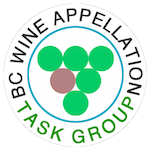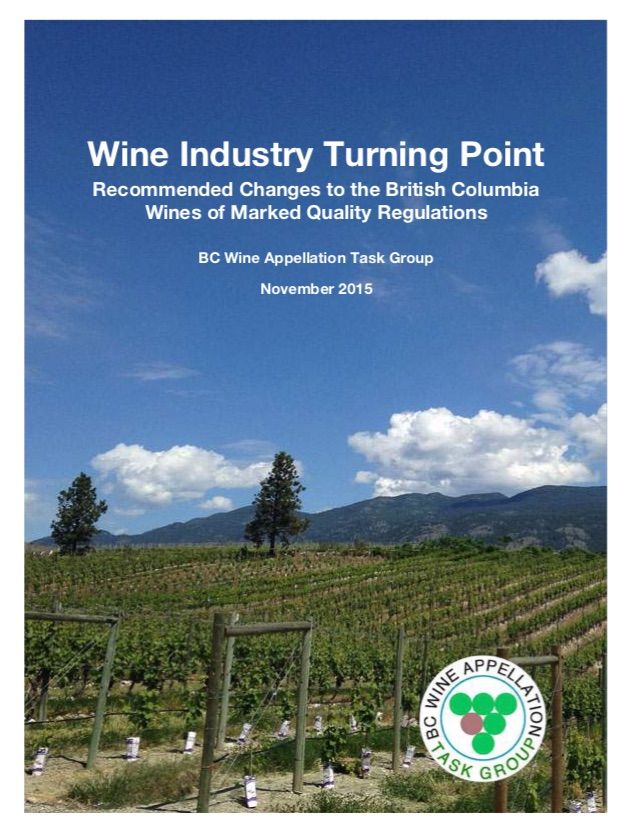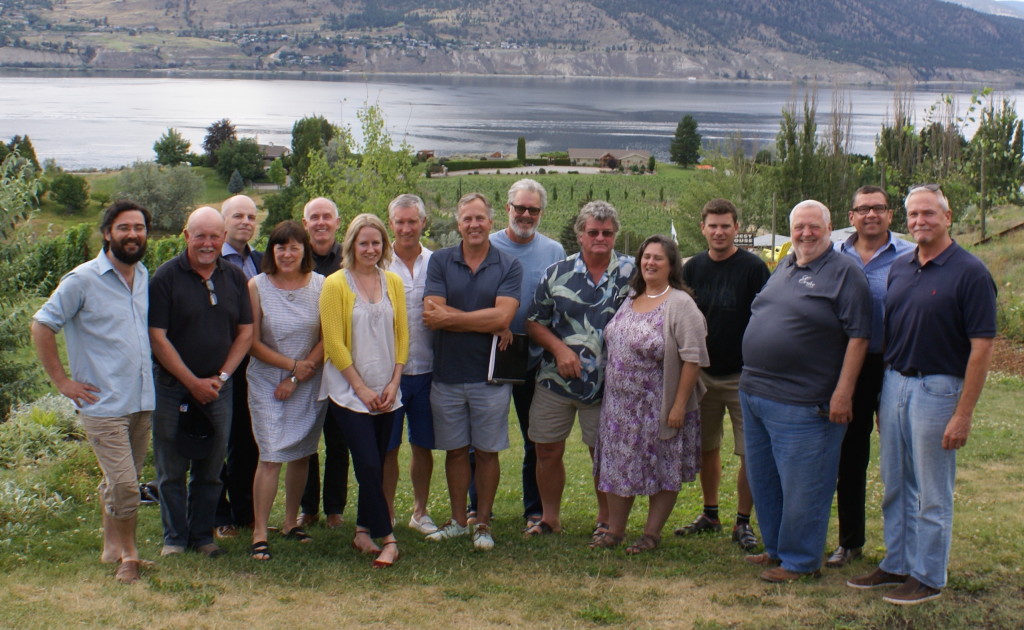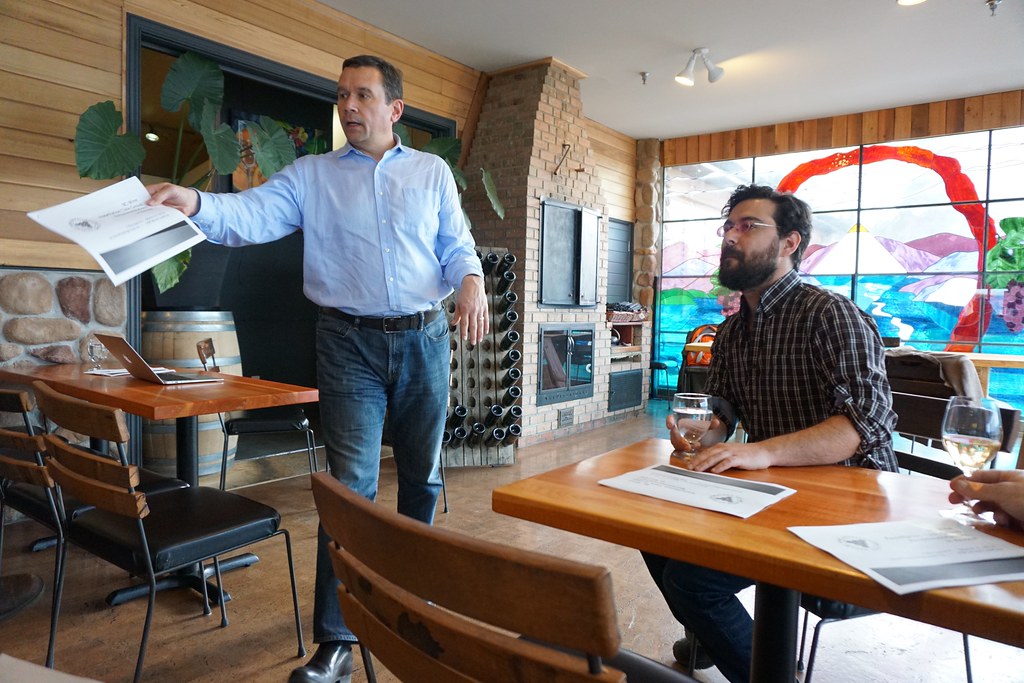B.C. government to enact all #bcwine “task group” reforms
The rules that govern how we label and authenticate the origin of wines in British Columbia are about to get an overhaul thanks to the B.C. government agreeing to implement the recommendations of the Wine Appellation Task Group (“Task Group”). The Task Group was a process undertaken early in 2015, concluding about 18 months later with the BC wine industry’s most successful plebiscite vote.
Today’s B.C. government news release places emphasis the creation of four new geographic indications, or GIs (sometimes referred to as appellations) in the emerging regions of Thompson Valley (near Kamloops), Lillooet (in the Fraser River Canyon), Shuswap, and the Kootenays. While the new GIs can be seen as an exciting expansion of our province’s wine regions, there are many other important changes brought forward by the Task Group that will revolutionize wine in B.C.
Why the Task Group?
 In January 2015, I was invited as a consultant to help set up a BC wine industry task force made up of many of its leaders. As a student of the history of the BC wine industry, I knew that this project could leave an important and permanent legacy in an industry I had long admired. It was not hard to say “yes” to this opportunity.
In January 2015, I was invited as a consultant to help set up a BC wine industry task force made up of many of its leaders. As a student of the history of the BC wine industry, I knew that this project could leave an important and permanent legacy in an industry I had long admired. It was not hard to say “yes” to this opportunity.
The timing was not coincidental. The B.C. government was in the midst of making major changes to modernize liquor laws. As well, there were several unresolved issues that were exacerbating friction within the industry — which had grown exponentially in recent years from a few dozen wine producers to several hundred licensed wineries.
One group of medium-sized wine producers (“medium” in B.C. is roughly defined as producing between 5,000 and 50,000 cases annually) went as far to create its own marketing entity to promote 100% BC wine. One of that group’s grievances (recently resolved by the industry) was the use of “Canada” on the packaging for wines featuring domestic and international grapes.
Ultimately, however, the Task Group’s mandate was addressing the consumer confusion and mislabeling of the origins of wine.
Wine is first and foremost about place — where the grapes are grown, the many conditions such as weather, soil and sunlight, harvest times, and even the communities surrounding the wine regions, all factor into what ends up in the bottle.
It could be argued that the BC wine industry cannot grow to its full potential without rigorous rules to authenticate that what is inside the bottle is accurately identified on its label. The existing rules — B.C.’s Wines of Marked Quality regulations — have loopholes and an ability for producers to opt out of certain requirements.
You could say the B.C. government took a leap of faith by supporting the Task Group both financially and by making a senior ministry official — Assistant Deputy Minister James Mack — the group’s government liaison. Winemaking is a business that requires a lot of passion, which explains why tempers flared the last time major industry reforms were attempted. No government or elected official wants to enter a war zone.

The Wines of Marked Quality regulations are part of the Ministry of Agriculture’s bailiwick, so approval for the project was ultimately granted by Ag Minister Norm Letnick, whose constituency was fittingly located in the Okanagan Valley. Letnick provided a greeting at the inaugural meeting of the Task Group, and urged the stakeholders present to “walk in the shoes” of their colleagues as they establish a pathway for change. For the most part, the Minister’s advice was heeded as we ventured out to speak to producers from across the province.
Consultations
There were multiple rounds of industry consultations. The first set was to gauge opinions and ideas. It involved some travel around the province to meet with stakeholders in B.C.’s established and emerging wine regions. It also involved holding conversations by phone with individuals from as far away as Ontario and Oregon State. The work that took place is all documented on the website I created as part of a communications and social media strategy to raise the Task Group’s profile and effectiveness.
 The second round of consultations continued in early 2016, where I was most often accompanied by the Task Group’s capable and friendly Chair, Ezra Cipes of Summerhill Pyramid Winery. We met with Vancouver Island winery representatives (twice), as well as held roundtables in the Similkameen Valley, Thompson Valley, Shuswap, Fraser Valley, and several meetings in the Okanagan located in Kelowna, Penticton and Oliver.
The second round of consultations continued in early 2016, where I was most often accompanied by the Task Group’s capable and friendly Chair, Ezra Cipes of Summerhill Pyramid Winery. We met with Vancouver Island winery representatives (twice), as well as held roundtables in the Similkameen Valley, Thompson Valley, Shuswap, Fraser Valley, and several meetings in the Okanagan located in Kelowna, Penticton and Oliver.
In many cases there were individuals whom I sought out for one-on-one meetings, all with the idea that we could build an important consensus where the industry could adopt the best practices needed to make B.C.’s niche wine region stand out.
Visit the site at bcwinetaskgroup.thinkingcap.ca and read the final report here and a follow-up report on the 2016 consultations here.
What are the changes?
Thanks to Hon. Lana Popham, the current Minister of Agriculture, the recommendations of the BC Wine Appellation Task Group are being added into an updated Wines of Marked Quality regulations document that will be completed this summer. These changes include:
- All wines made from 100% BC grapes must register as either British Columbia VQA (“BC VQA”) or British Columbia Wine in order to qualify for recognition as a Wine of British Columbia.
- The term “Wines of Distinction” used for BC wine that has not been put through the BC VQA tasting panel will simply be known in the regulation as British Columbia Wine. The use of the word “distinction” was considered to be confusing to both consumers and those in the industry.
- As a condition of having a winery license, producers making wine from 100% B.C. grown grapes will be required to become members of the BC Wine Authority (BCWA), the regulatory body that oversees the BC Vintners Quality Alliance standard that has heretofore had a voluntary membership. All BCWA members are subject to audits conducted and enforced per the Wines of Marked Quality regulation. (This was the most controversial recommendation, and apparently the one that required the most work behind the scenes to make happen).
- The B.C. government will support smaller operations by establishing flat fees for the BC VQA program for small wineries to ensure participation isn’t cost prohibitive. Currently, over 176 wineries participate in the program, regulated by the BC Wine Authority representing approximately 75 per cent of licensed grape wineries in the Province.
- Four new geographic indications are being established to better identify wines being produced in the province’s emerging wine regions — Thompson Valley, Shuswap, Lillooet and Kootenays.
- Changes have already been put into effect (in late 2016) to streamline the process for creating new sub-geographic indications (sub-GI). Currently, the province only has one official sub-geographical indication, the Golden Mile Bench, near Oliver. The Ministry of Agriculture will also support industry efforts to identify new sub-geographical indications to help bring more distinction to the multiple wine growing areas of the Okanagan Valley and other regions.
- For wines that use a sub-GI, the Task Group asked that “conjunctive labeling” is required so that a wine also identifies the GI – i.e. Golden Mile Bench, Okanagan Valley BC VQA.
These changes were announced by the BC government in collaboration with the BC Wine Institute, and timed to coincide with BC Wine Month, an industry marketing program. Read today’s full release on the implementation of the Task Group recommendations by clicking here.
We're proud to support the hard-working people who make the #BCWine industry such a success!@jjhorgan and @lanapopham visited the beautiful @TinhornCreek in the #Okanagan to celebrate the British Columbians behind our world-class🍷https://t.co/lANKtrjDcL #BuyBC #BCWineMonth pic.twitter.com/GgMaRhBDJi
— BC Government News (@BCGovNews) April 11, 2018
This is a very proud day for me personally, and I am extremely grateful to everyone within the BC wine industry and in the B.C. government who supported and participated in the Task Group and in the consultations. Now, onward! Let’s keep making the exceptional wines here in B.C. that Canadians can be proud of, and the rest of the world cannot wait to taste.



April 12, 2018 @ 8:22 pm
I’m strongly opposed to the task force’s third recommendation, because it makes joining the BC Wine Authority a mandatory requirement. Being a member of the BCWA comes with considerable costs involved, and the smallest wineries are the ones that can least afford them. Worse yet, BCWA ‘dues’ are born inversely by the smallest producers, because those costs are the same whether the winery makes 1000 liters or 100,000 liters.
It would have been bad enough that the task force recommended that only members of the BCWA could use a specific Geographical Indicator on their labels. But to go far beyond that by making membership in the BCWA mandatory is, in my opinion, unacceptable.
April 12, 2018 @ 8:31 pm
Thanks, Richard. It is because of concerns like the one you have expressed the Task Group recommended a modest flat fee for the BC VQA certification, or if you want, you can instead not VQA your wines and just have them as British Columbia Wine on your bottle. In other words, you will have a choice to VQA your wines or not, and in both instances the wines will be considered as authentic wines of BC.
BCWA should make available what the real costs are for being a member so there is no confusion. This process was meant to be as inclusive as possible, and very respectful of small, cost-conscious producers. To do it otherwise would not make sense.
April 13, 2018 @ 9:52 am
The fees for being a member of the BC Wine Authority are already being applied on a flat basis. That’s why they disproportionately affect the smallest wineries. For example, it costs exactly the same to VQA certify a batch of wine, whether it’s 1000 liters or 100,000 liters. The big producer can spread the cost over tens of thousands of bottles of wine, whereas the small producer cannot.
But that is only one way that being a member of the BCWA significantly increases costs for small wineries. Above the cost of certifying the wine comes the labour-intensive tasks associated with having your whole winery certified by the agency. It means that the winery owner must track and keep records of every grape that comes into his cellar, along with every bottle of wine made. It means that he must produce those records for auditing, by the BCWA- an audit for which the winery owner must pay a flat fee. Once again, a bigger winery can spread those costs over far greater production. In addition, bigger wineries have employees that can address all the BCWA paperwork in their idle moments. In a small winery the owner herself has to deal with that, along with all the other reporting she must do for federal Excise, provincial liquor authorities and other agencies.
I brought the cost problem to the attention of the BCWA some years ago. Since then the costs and overhead have grown exponentially. That overhead finally caused me to withdraw my membership in the agency this year. So you can imagine how this wine maker feels about being told that membership will now be mandatory.
I will be expressing my strong disapproval of that provision to the minister responsible.
April 13, 2018 @ 10:07 am
Sorry, Richard, but that’s incorrect. The “flat fees” are a significant step toward allowing small (< 5,000 cases) producers to VQA their wines. These will be effectively subsidized by larger producers to make it revenue neutral for BCWA. There was significant discussion about costs for small producers when we did the Task Group. No one wants to put anyone out of business. I recommend that you visit the http://bcwinetaskgroup.thinkingcap.ca and review all the documents and the report. It will catch you up on all the work that was done on your behalf back in 2015-16. Happy to discuss with you next time we chat.